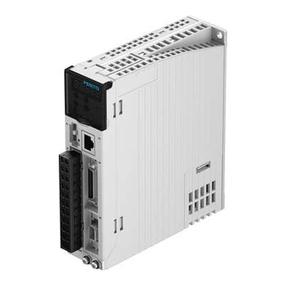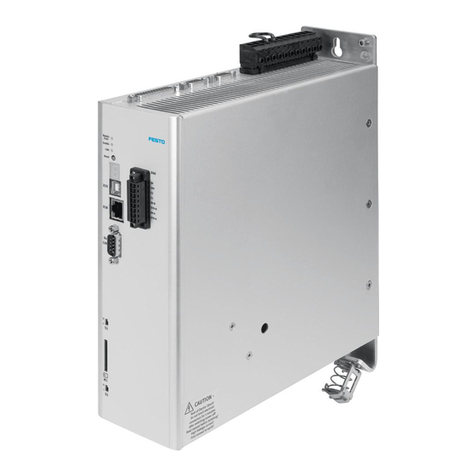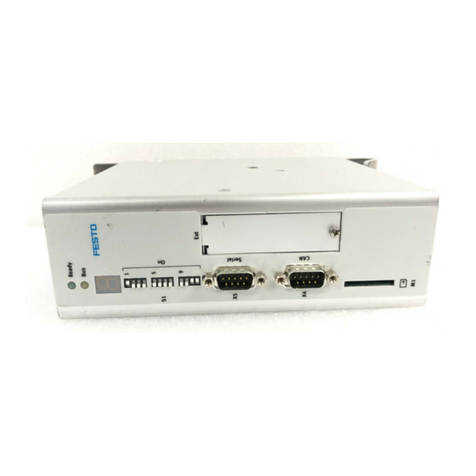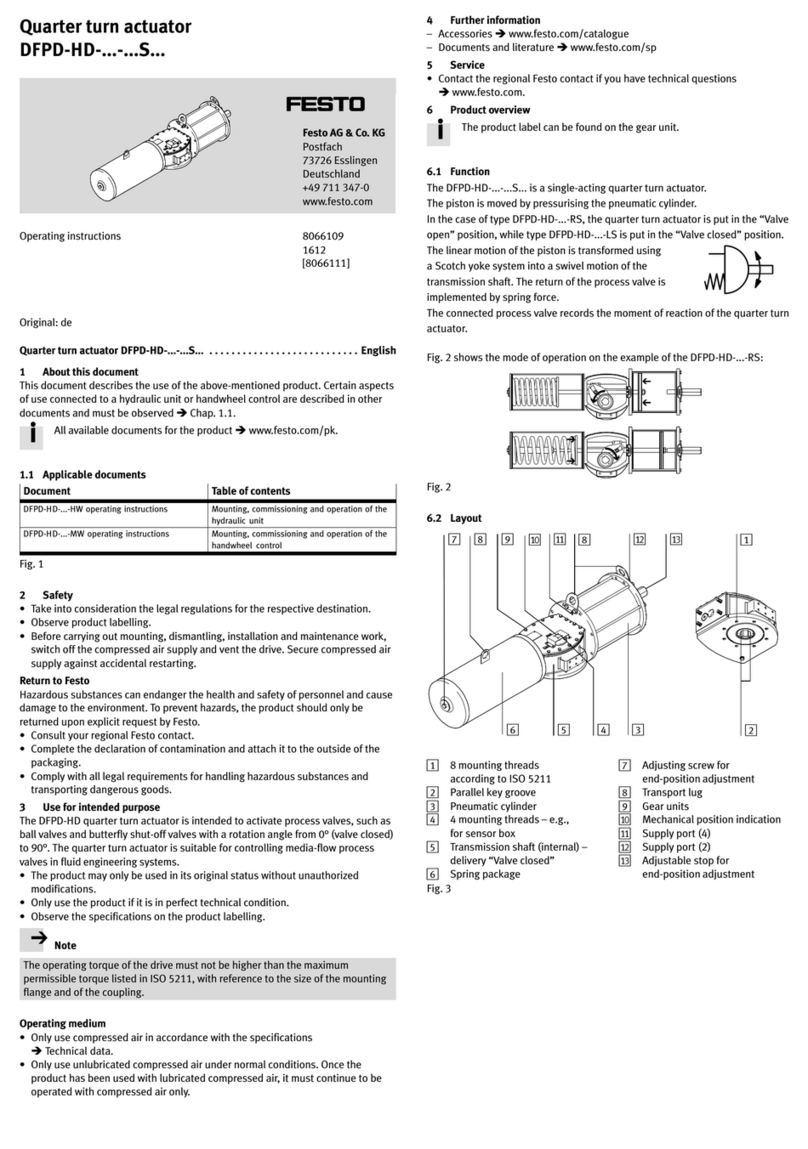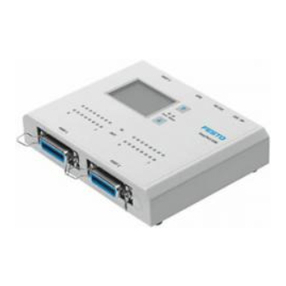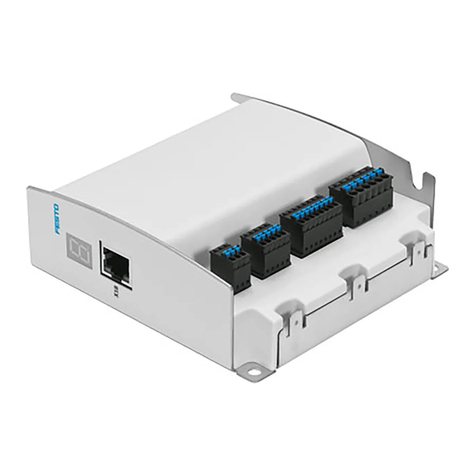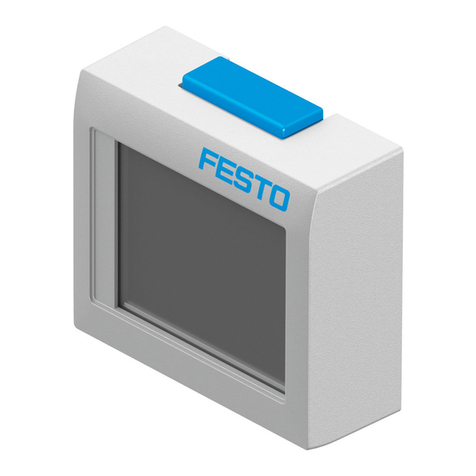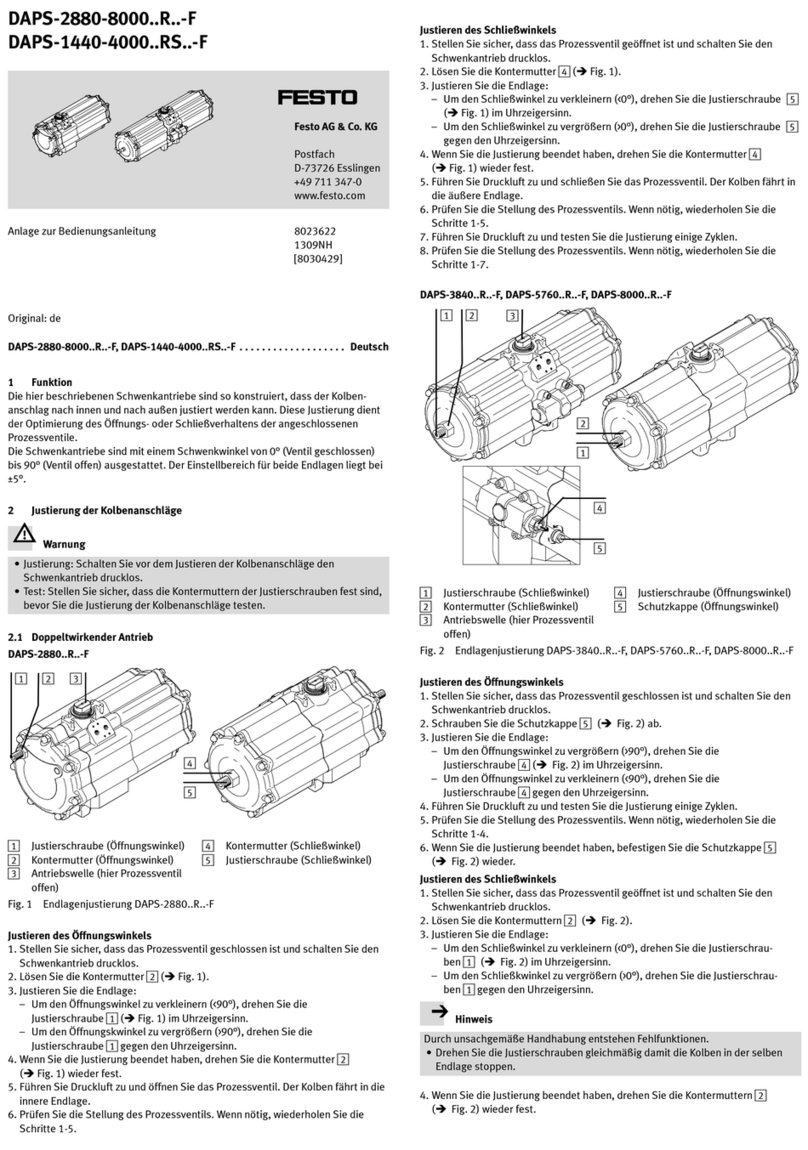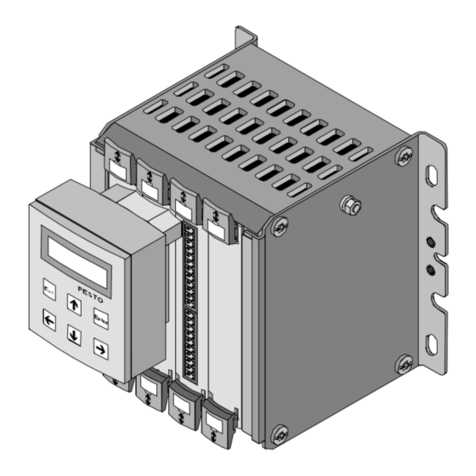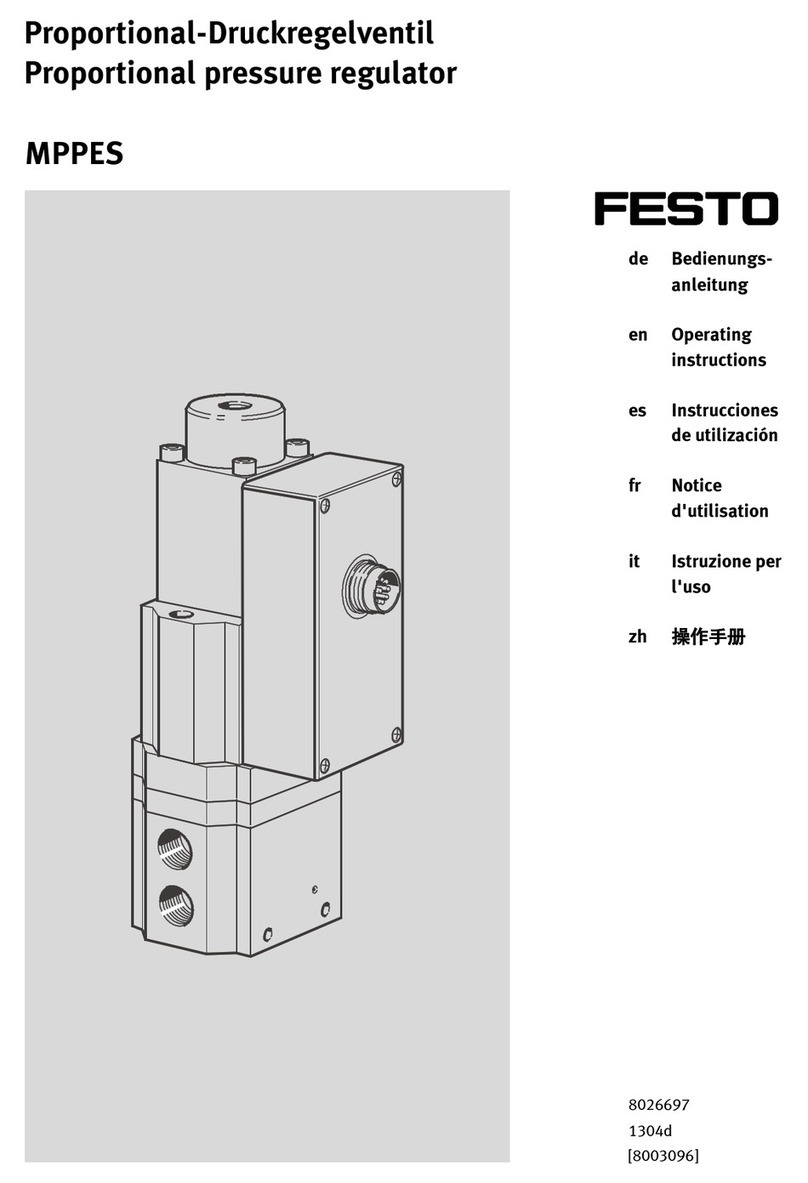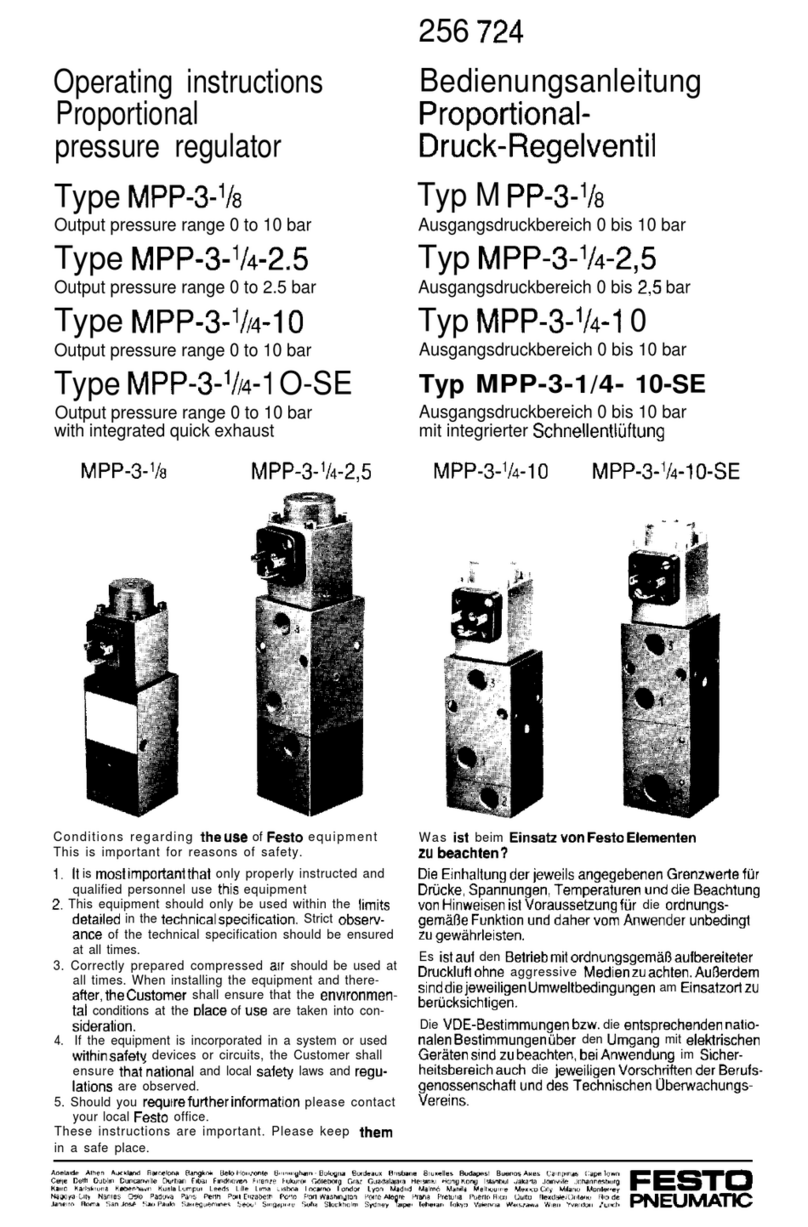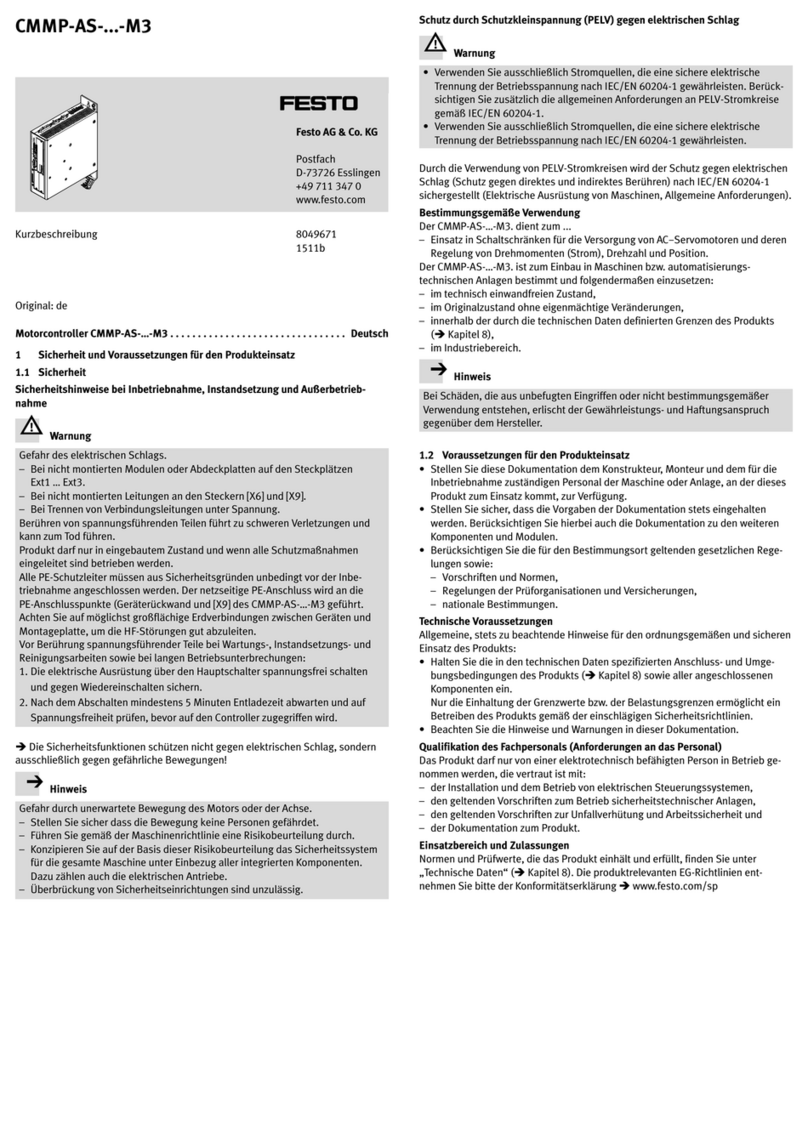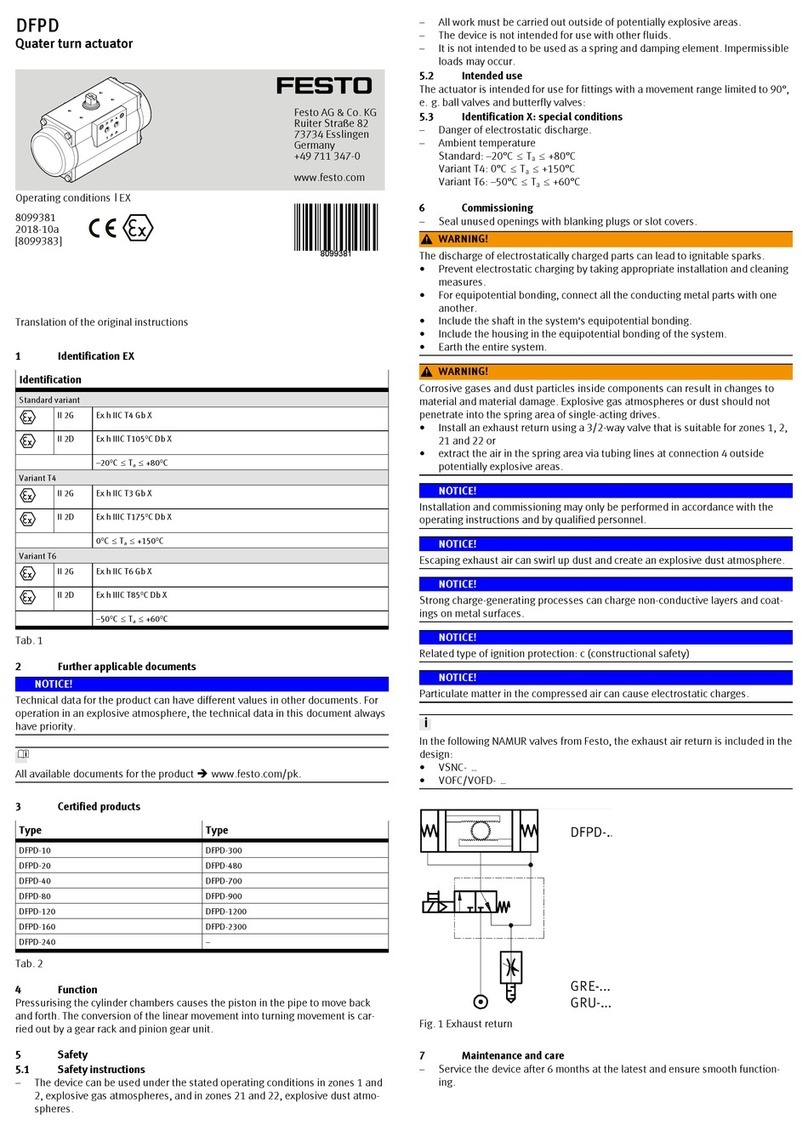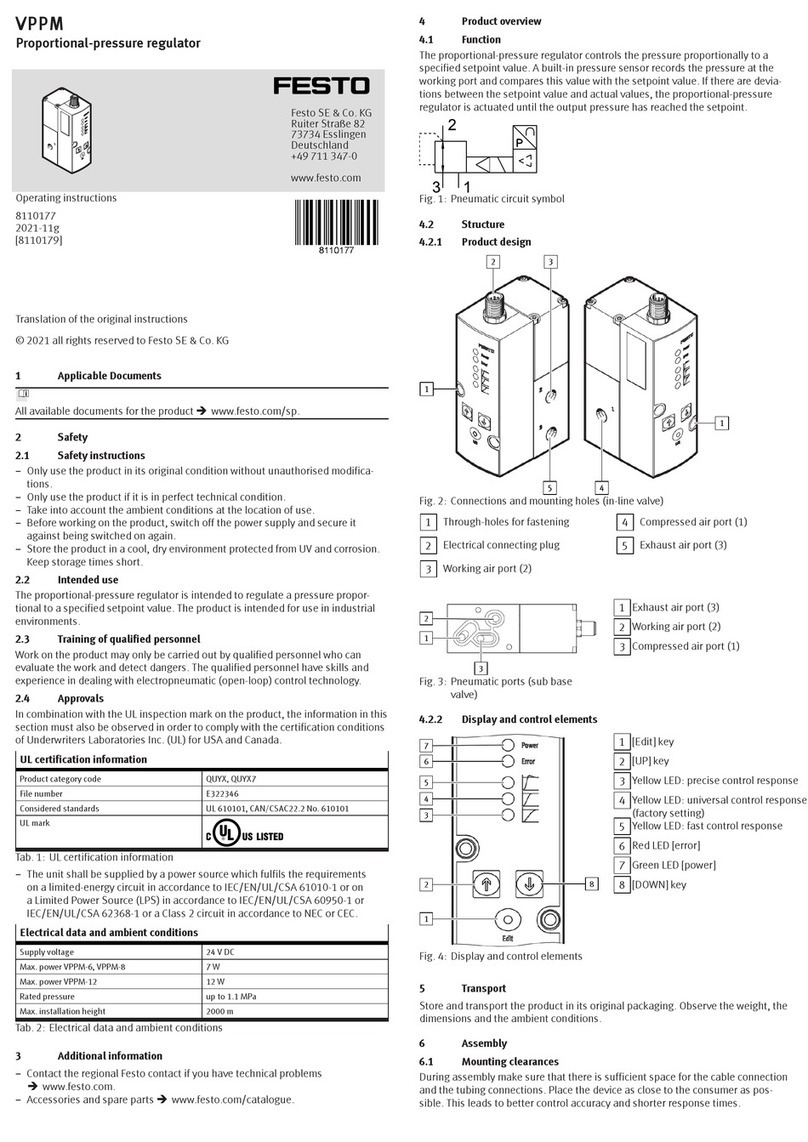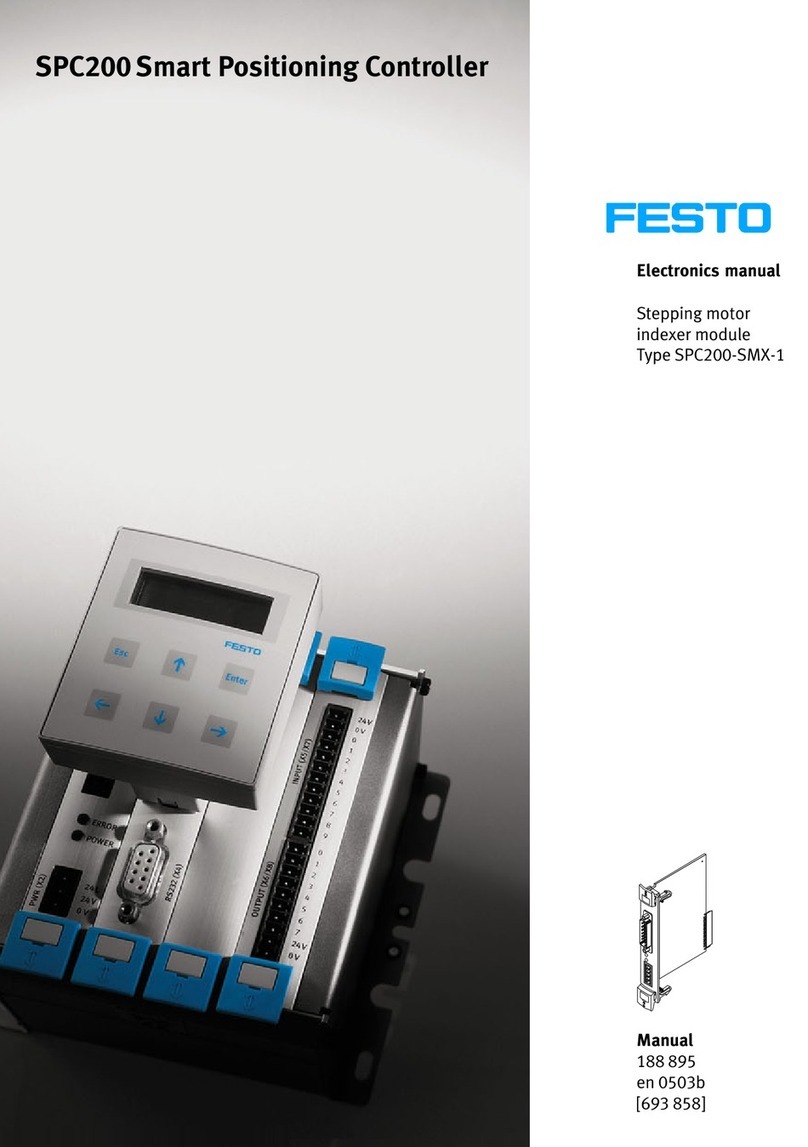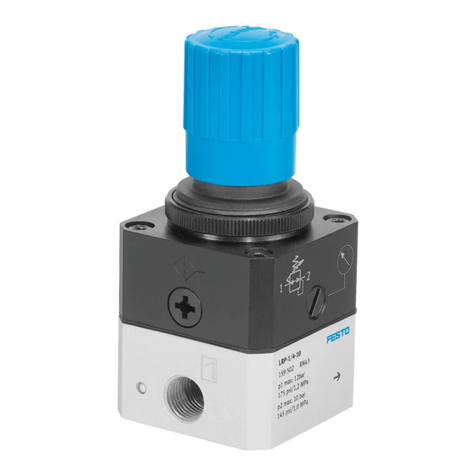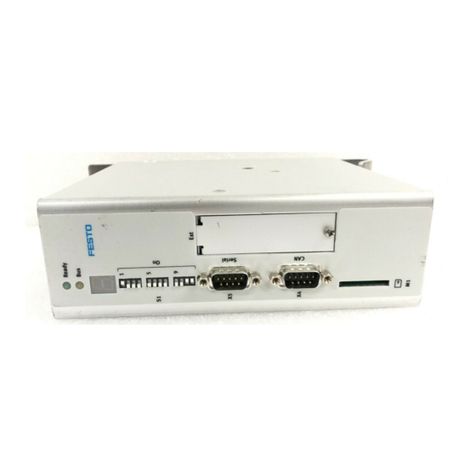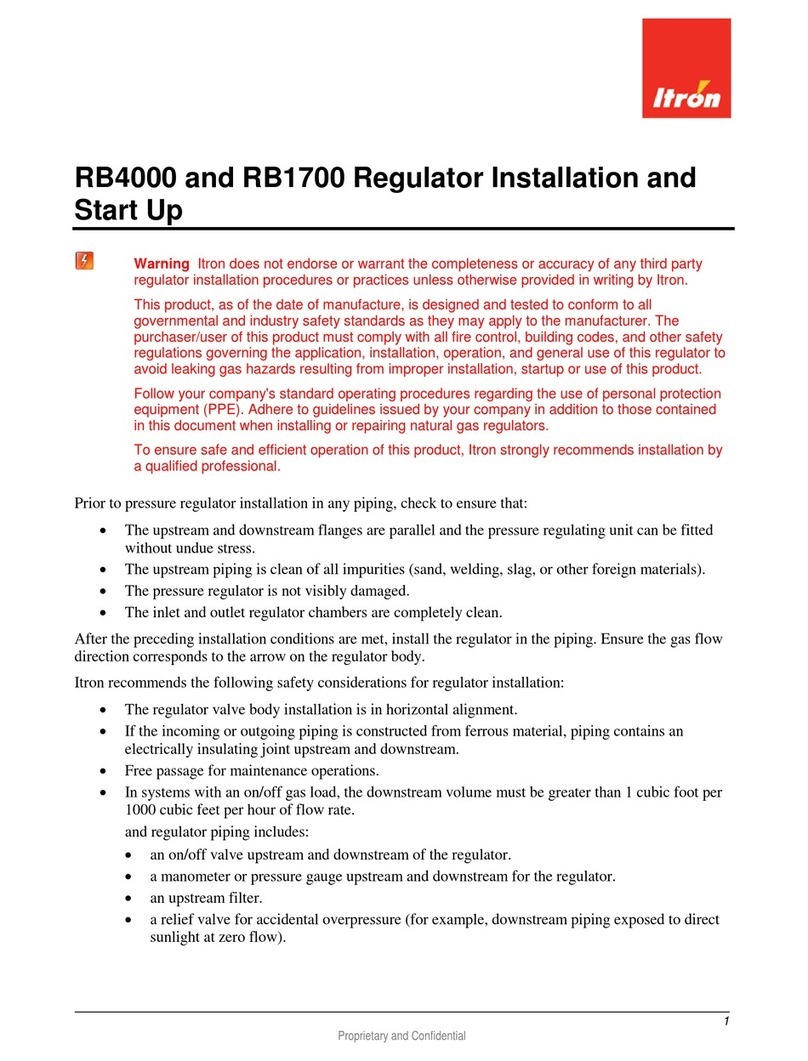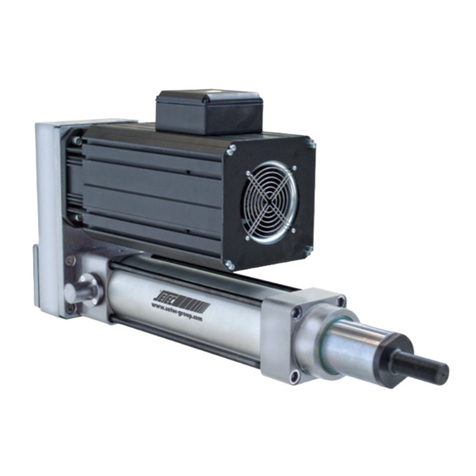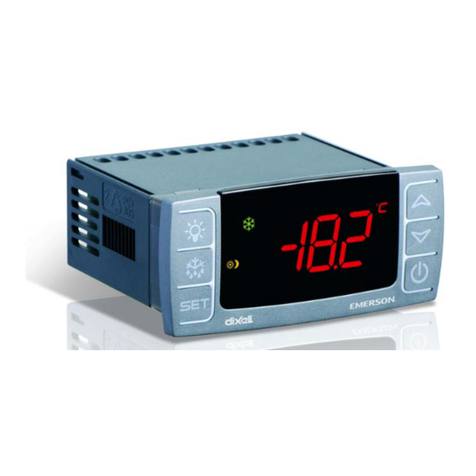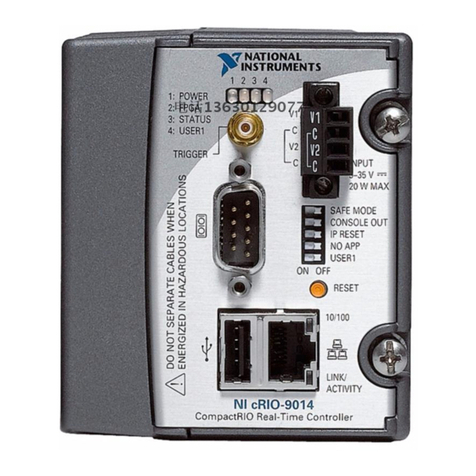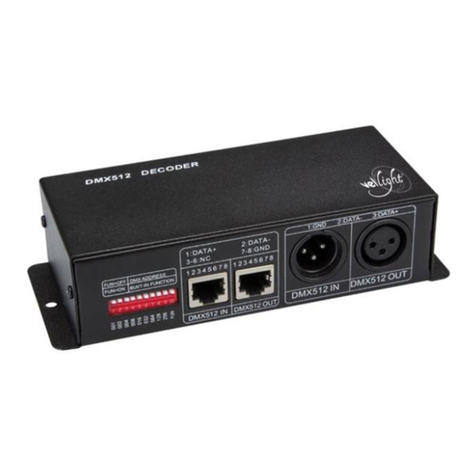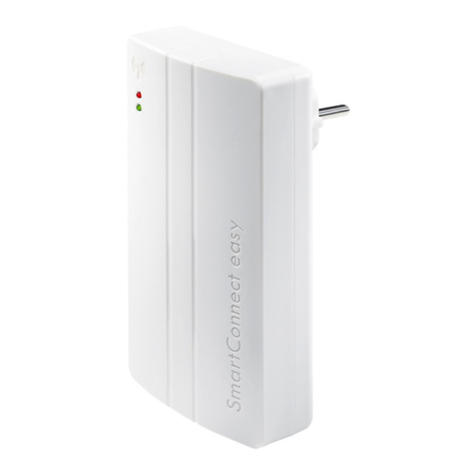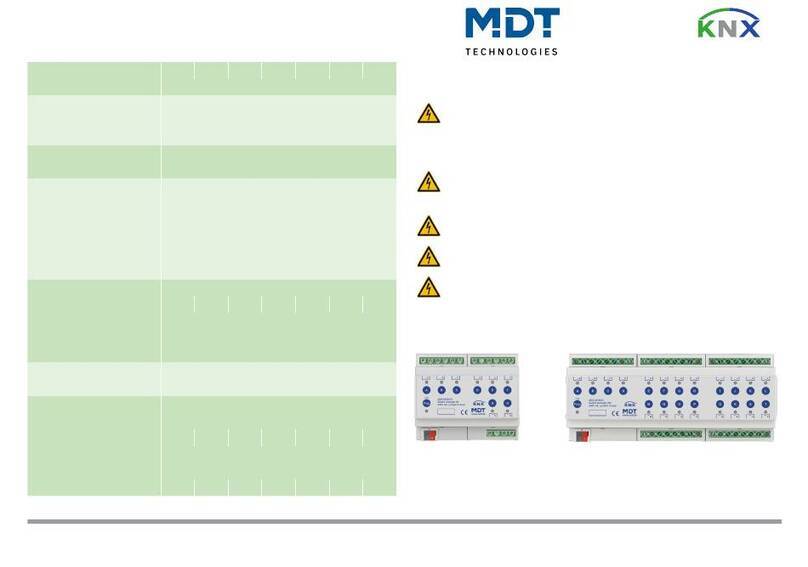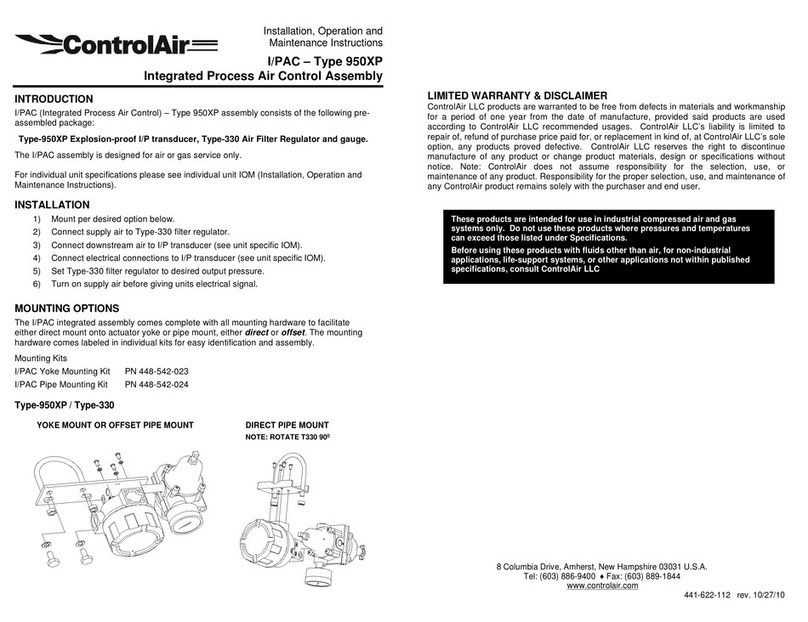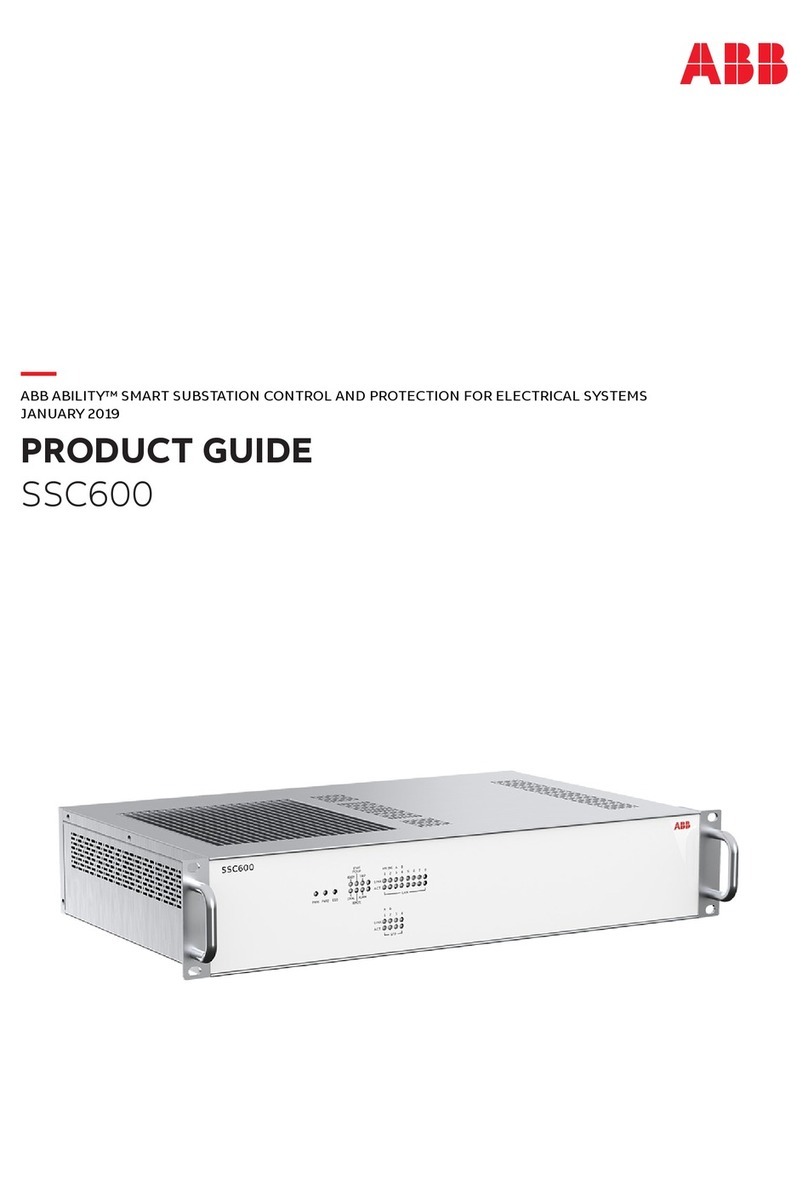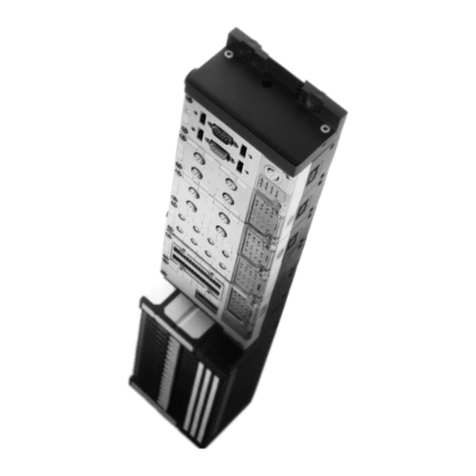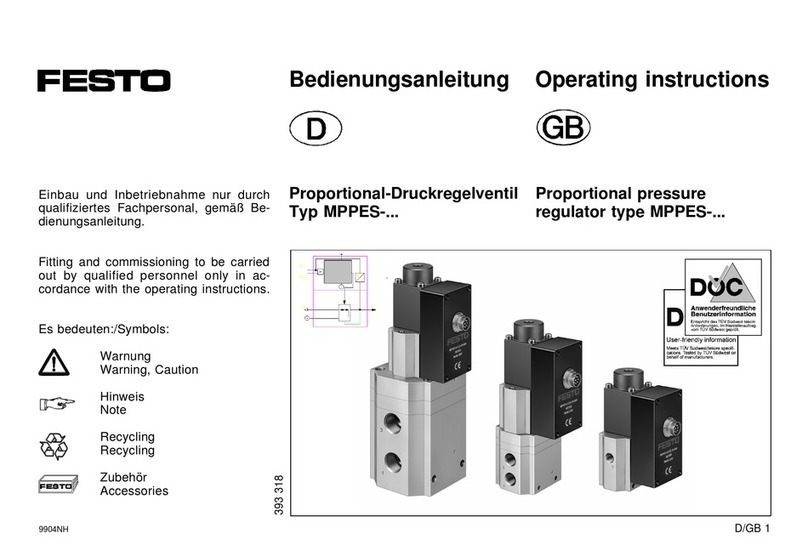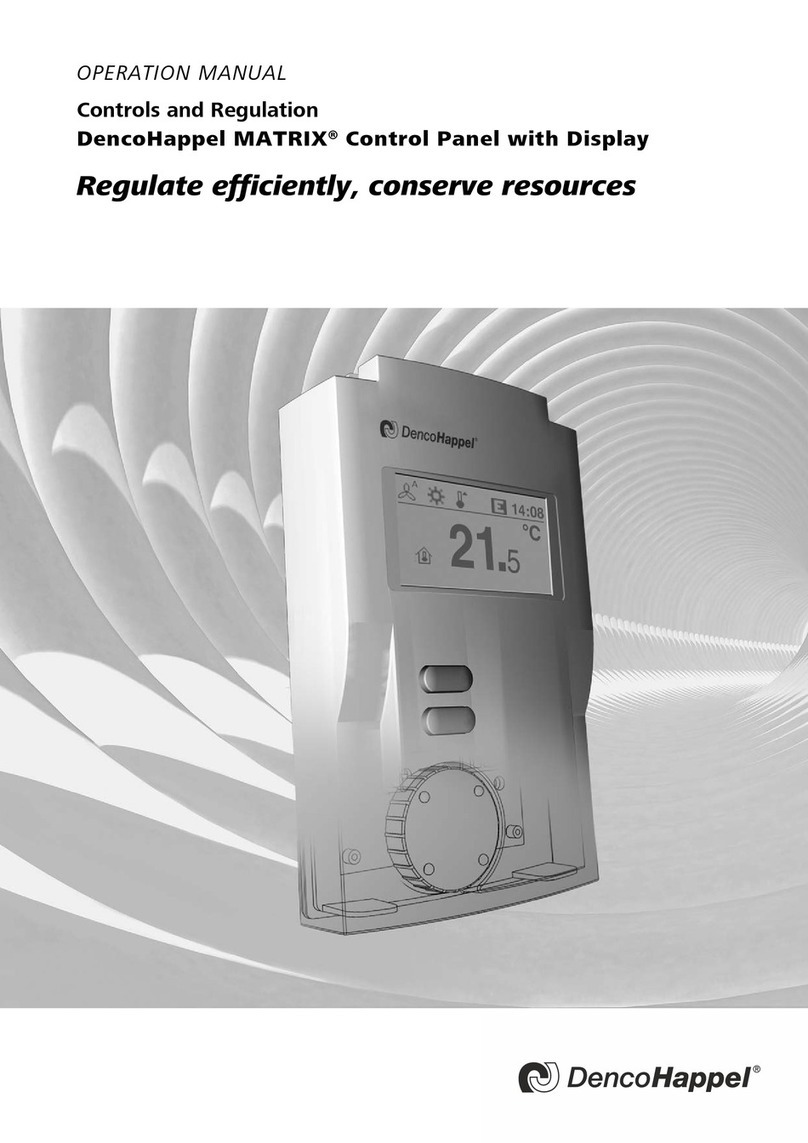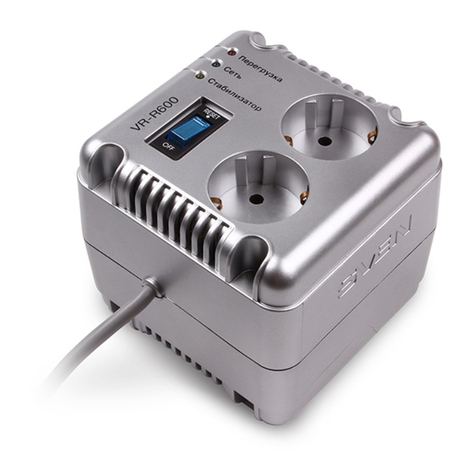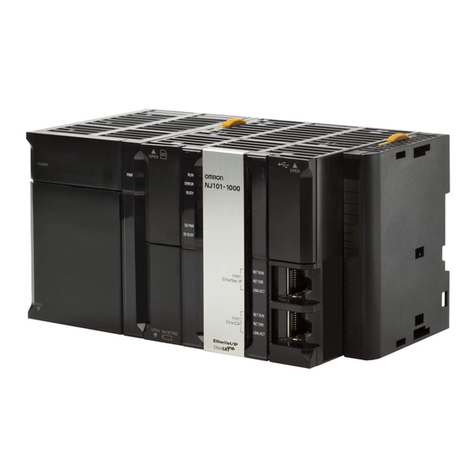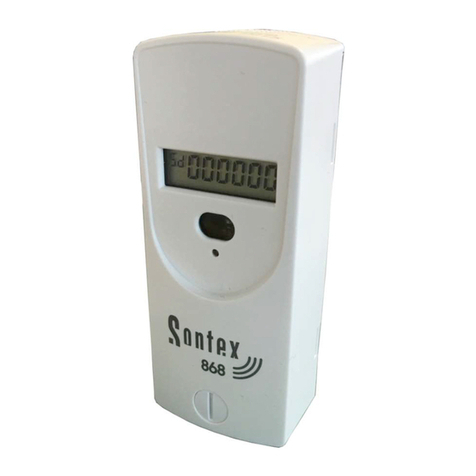
Translation of the original instructions
© 2020 all rights reserved to Festo SE & Co. KG
CODESYS®, EtherCAT®, EtherNet/IP®, MODBUS®, WINDOWS® are registered
trademarks of the respective trademark owners in certain countries.
1 About this document
This document describes the use of the above-mentioned product.
Certain aspects of use are described in other documents and must be observed
è 1.1 Further applicable documents.
1.1 Further applicable documents
Document Contents
Description of Automation system CPX-E
(CPX-E-SYS)
Detailed description of automation system
CPX-E
Instruction manual for Automation system CPX-E
(CPX-E-SYS)
Instruction manual and important information
on assembly, electrical installation and main-
tenance tasks for an automation system CPX-E
Description of controller CPX-E-CEC-...-EP
(CPX-E-CEC-...-EP)
Detailed description of controller
CPX-E-CEC-...-EP
CODESYS Installation and getting started.pdf
CODESYS_OPC_Server_V3_Benutzerhandbuch.pdf
Working with CODESYS
èInstallation directory for the software
Online help for CODESYS V3 Detailed information on using the product with
CODESYS V3 and the Festo extensions
Online help for CODESYS libraries Description of the function blocks for an expan-
ded function range of the controller
Instruction manual for operator unit CDSB General functions of the operator unit
Tab. 1 Further applicable documents
All available documents for the product èwww.festo.com/pk.
1.2 Product version
This document refers to the following product versions:
Product Programming Version
CPX-E-CEC-C1-EP With CODESYS V3 Revision1 and later
CPX-E-CEC-M1-EP With CODESYS V3 and SoftMot-
ion
Revision1 and later
Tab. 2 Product version
The product version can be identified from the product labelling or with the help
of appropriate software from Festo.
Appropriate software for determining the product version can be found in the
Festo Support Portal èwww.festo.com/sp.
Information on using the software can be found in the integrated Help function.
There may be an updated version of this document for these or later product ver-
sions èwww.festo.com/sp.
1.3 Product labelling
The product labelling is located on the left-hand side of the module. Scanning the
printed Data Matrix Code with an appropriate device opens the Festo Support
Portal, with the information appropriate for the product. Alternatively, the Product
Key (11-digit alphanumeric code on the product labelling) can be entered in the
search field of the Support Portal.
You can find detailed information on the product labelling in the description of the
module è 1.1 Further applicable documents.
1.4 Specified standards
Version status
EN60529:2013-10 IEC60204-1:2014-10
EN61000-6-2:2005-08 NE21:2012-05
EN61000-6-4:2007-01 –
Tab. 3 Standards specified in the document
1.5 UL/CSA Certification
In combination with the UL inspection mark on the product, the information in this
section must also be observed in order to comply with the certification conditions
of Underwriters Laboratories Inc. (UL) for USA and Canada.
UL certification information
Product category code NRAQ/NRAQ7
File number E239998
Considered standards UL 61010-1, 3rd Edition, May 11, 2012, revised April 29, 2016
CAN/CSA-C22.2 No. 61010-1-12, 3rd Edition, revision dated April
29, 2016
UL 61010-2-201, 1st Edition, revised February 20, 2017
CSA-C22.2 No. 61010-2-201: 14, 1st Edition, issue date January
01, 2014
UL mark
Tab. 4 UL/CSA Certification Information
– Technical data and environmental conditions may be subject to change in
order to comply with Underwriters Laboratories Inc. (UL) certification require-
ments for the USA and Canada.
Observe deviations èTechnical data.
– The unit shall be supplied by a power source which fulfils the requirements
on a limited-energy circuit in accordance to IEC/EN/UL/CSA 61010-1 or on a
Limited Power Source (LPS) in accordance to IEC/EN/UL/CSA 60950-1 or
IEC/EN/UL/CSA 62368-1 or a Class 2 circuit in accordance to NEC or CEC.
Unauthorised access to the device can cause damage or malfunctions.
When connecting the device to a network:
Protect the network against unauthorised access.
Measures to protect the network include:
• Firewall
• Intrusion Prevention System (IPS)
• Network segmentation
• Virtual LAN (VLAN)
• Virtual private Network (VPN)
• Security at physical access level (port security)
For additional information èGuidelines and standards for security in information
technology, e.g. IEC62443, ISO/IEC27001.
An access password only protects against unintentional modification.
NOTICE!
Modules with Ethernet interfaces should only be operated in networks if all con-
nected network components are supplied by PELV circuits or integrated circuits
with equivalent protection.
2 Safety
2.1 Safety instructions
– Take into consideration the legal regulations for the respective destination.
– Use the product only within the defined values
è 13 Technical Dataè Tab. 21 Ambient Conditions UL/CSA.
– Observe labelling on the product.
– Observe further applicable documents.
– Store the product in a cool, dry, UV-protected and corrosion-protected envir-
onment. Ensure that storage times are kept to a minimum.
– Before working on the product: switch off the power supply and secure it
against being switched on again.
– Comply with the handling specifications for electrostatically sensitive devices.
– Activate the load voltage first when the system is properly installed, con-
figured and parameterised.
8126532
CPX-E-CEC-...-EP
Controller
8126532
2020-01a
[8126534]
Instructions| Operating
Festo SE & Co. KG
Ruiter Straße 82
73734 Esslingen
Germany
+49 711 347-0
www.festo.com






